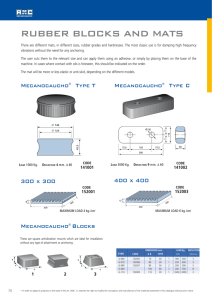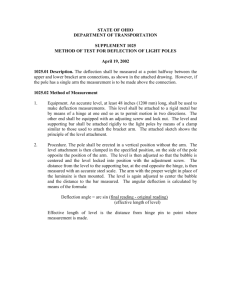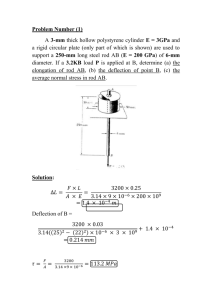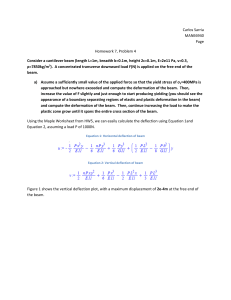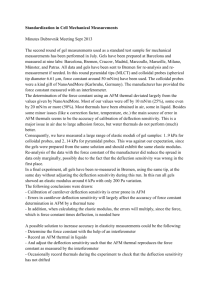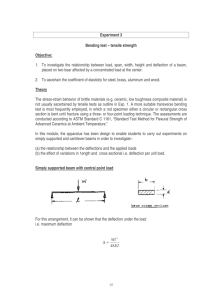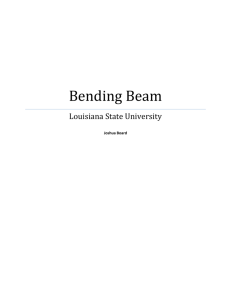Aim: The aim of this lab is to calculate moment of inertia
advertisement
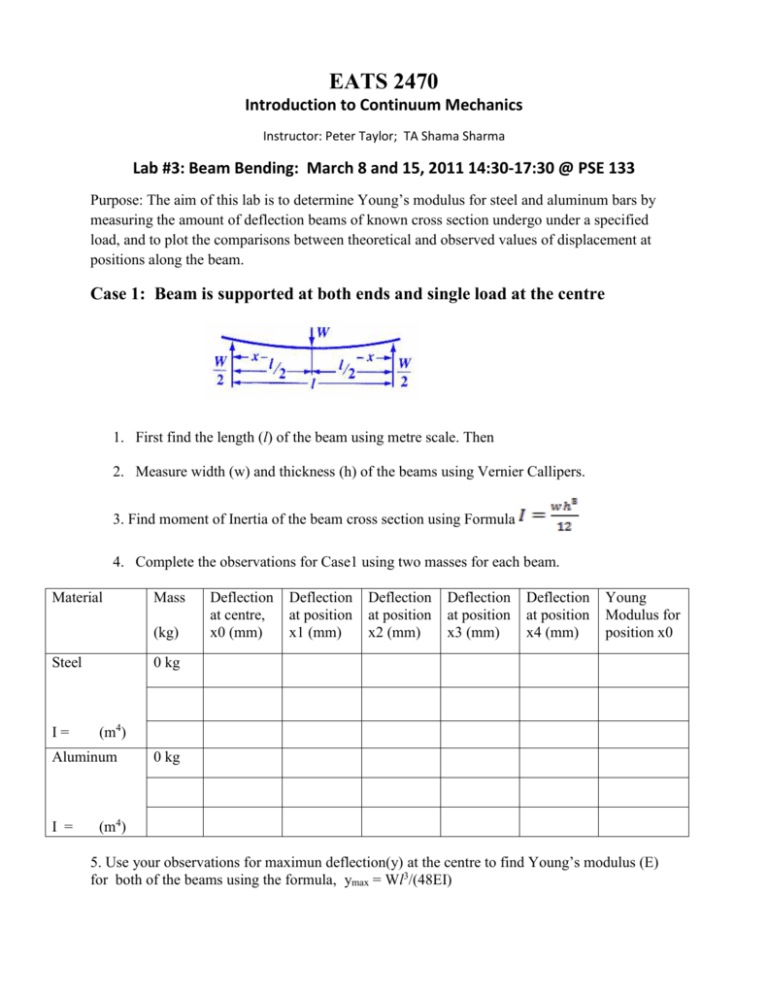
EATS 2470 Introduction to Continuum Mechanics Instructor: Peter Taylor; TA Shama Sharma Lab #3: Beam Bending: March 8 and 15, 2011 14:30-17:30 @ PSE 133 Purpose: The aim of this lab is to determine Young’s modulus for steel and aluminum bars by measuring the amount of deflection beams of known cross section undergo under a specified load, and to plot the comparisons between theoretical and observed values of displacement at positions along the beam. Case 1: Beam is supported at both ends and single load at the centre 1. First find the length (l) of the beam using metre scale. Then 2. Measure width (w) and thickness (h) of the beams using Vernier Callipers. 3. Find moment of Inertia of the beam cross section using Formula 4. Complete the observations for Case1 using two masses for each beam. Material Mass (kg) Steel I= Deflection at position x1 (mm) Deflection at position x2 (mm) Deflection at position x3 (mm) Deflection at position x4 (mm) Young Modulus for position x0 0 kg (m4) Aluminum I = Deflection at centre, x0 (mm) 0 kg (m4) 5. Use your observations for maximun deflection(y) at the centre to find Young’s modulus (E) for both of the beams using the formula, ymax = Wl3/(48EI) 6. The formula for calculating the amount of deflection between load and support points at various locations other than the centre is given by y = Wx(3l2-4x2)/(48EI) 7. For one value of W, use your calculated value of E (which is Young’s Modulus) to find expected value of deflection at particular positions using the following table Material Mass(gm) Expected value of Deflection at position x1 Expected value of Deflection at position x2 Expected value of Deflection at position x3 Expected value of Deflection at position x4 Steel Aluminum 8. Use plotting software to generate a plot between the variation amount of deflection(y) at different positions from the load(x) and compare it with the observed values from the experiment and the expected values from the calculations. Case 2: Beam is supported at one end and load is applied at the other. Formula is Repeat the procedure as in case 1 and fill your observations in the following table Material Mass (kg) Steel Deflection at position x1 (mm) Deflection at position x2 (mm) 0 kg I = (m4) Aluminum 0 kg I = (m4) Compare the values of E from both cases.. Deflection at position x3 (mm) Deflection at end x4 (mm) Young Modulus for position x4
